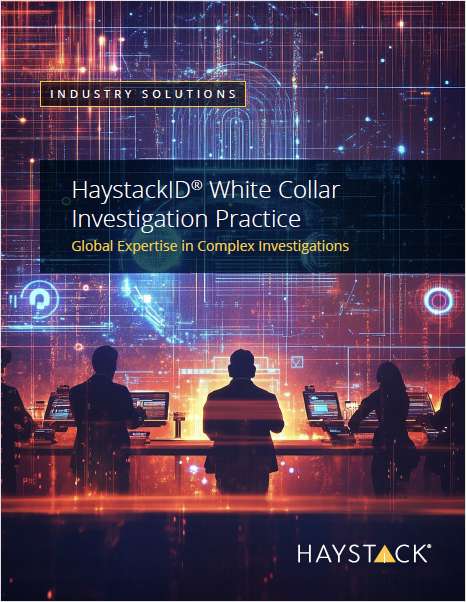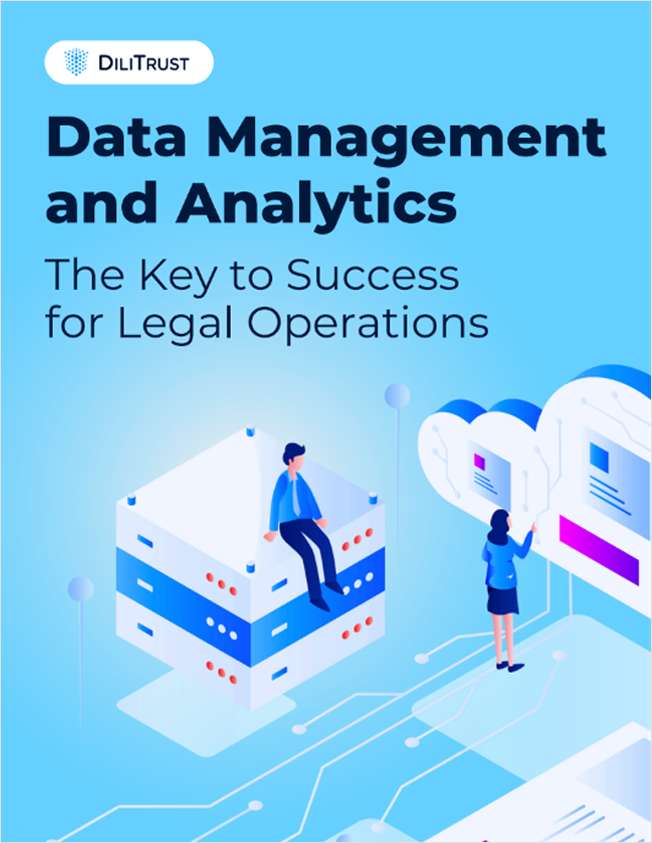 Credit: anttoniart/Shutterstock.com
Credit: anttoniart/Shutterstock.comSorry Legal Tech: For Firms and In-House, Time is Still Money
Strong allegiance to the billable hour from both law firms and their clients could be hindering wider legal tech adoption.
April 28, 2020 at 07:00 AM
9 minute read
The original version of this story was published on Legal Tech News
This article first appeared in the May print editions of Corporate Counsel and The American Lawyer magazines under the title "Sorry Legal Tech, Time is Still Money."
After news broke in March that hybrid law firm Atrium would be shutting down its software startup, CEO Justin Kan told TechCrunch that the company "did not figure out how to make a dent in operational efficiency." But it may not be legal tech providers that are coming up short.
While there are plenty of solutions on the market geared towards automating tasks such as brief-writing, pulling cases or even fielding basic client questions, getting work done faster flies in the face of the traditional billable hour model that continues to sustain many a law firm. In fact, the real answer to why technology can't kill the billable hour may be exceedingly simple: Attorneys—and even some clients—don't want it to happen.
Their reluctance isn't entirely surprising. Many lawyers are accustomed to measuring their profitability and even performance based on the amount of time they are able to charge for a given matter, while some corporate clients have grown accustomed to the billable hour as a widely understood and accepted metric of service. However, the issue may run even deeper, illustrating a fundamental misunderstanding that still continues to plague those working inside of the legal industry—and could be preventing technology-enabled efficiency from taking hold inside firms.
"I think the billable hour is a symptom of a much larger problem, which is basically not thinking about law as a business and thinking about it as a profession," says Nathan Cemenska, director of legal operations and industry insights at Wolters Kluwer's ELM Solutions.
|Who's Got the Time?
At its simplest level, the reluctance among firms to tout efficiency-based solutions comes down to economics. Joe Dewey, a partner at Holland & Knight, notes that his firm struggles with just how much of their technology and efficiency gains to showcase for clients. It's often negotiating the sometimes tenuous balance of positioning yourself as the law firm of the future and shooting yourself in the foot.
"You may not want them to know how well the technology works because if they see how dramatic the time savings are, all the sudden you run the risk of them saying, 'Well, why am I paying you this much money?'" he says.
There are other practical implications to consider as well. Firms shelling out the salaries for large practice groups full of attorneys, for example, don't want team members sitting idly with nothing to do because a machine has already accomplished a task for them.
Of course, the simplest solution might be to downsize those teams and replace the vacant chairs with automated solutions that can accomplish some of the same routine tasks without drawing an annual salary. Cemenska used the privacy compliance software developed by Wilson Sonsini's tech subsidiary SixFifty as an example. Those solutions help automate the production of necessary documents that would otherwise require a substantial amount of cash and human effort to produce manually.
But firms like Wilson Sonsini may be the exception instead of the rule. "There are definitely examples of firms that are leveraging technology rather than people, but I think that most firms haven't figured out a good way to do that," Cemenska says.
Other alternatives have yet to catch on inside the industry. Cemenska raised the possibility of a gig economy model that sees legal employees paid based on amount of work they produce rather than a flat salary—but that may not be well received by the legal talent pool. "I think people want a steady job," he adds.
Idle hands are typically less of a problem for smaller firms who retain modestly sized staffs. Legal consultant Brett Burney notes that smaller firms tend to handle areas of the law like estate planning, family law or trusts that lend themselves towards automation. In his view, they are also more likely to step away from the billable hour, although that attitude may not be trickling upwards in the direction Am Law 100 firms any time soon.
"I wouldn't know when a large law firm would look at a small law firm and say, 'Hmm, that's interesting what they are doing.' The only time I would maybe see that is if a large law firm loses business to a smaller law firm," Burney says.
|Corporate America Hearts the Hour
To be sure, flipping away from the billable hour model could require a significant structural change inside firms beyond just how they charge for their services. Catherine Moynihan, associate vice president of legal management services at the Association of Corporate Counsel (ACC), points out that law firms also use billable hours as a metric for employee performance. However, she believes that may change as Millennials become increasingly prominent in the legal workforce. Not only does that demographic tend to be more interested in results versus time, but there's also robust interest in opportunities to work away from an office.
"And so that also forces the hand towards being more flexible, being more creative about how performance is measured, which I think will help sort of grease the skids towards shifting away from the billable hour," Moynihan says.
However, it's not just attorneys who may be reluctant to leave the billable hour behind. Dewey says that his firm occasionally presents an alternative fee proposal to a corporate client only to have it shot down. One possible reason? Corporate clients who have been in the profession a long time may be just as attached to the comfort and familiarity of the billable hour as attorneys.
"They feel it's a somewhat fair metric to evaluate a lawyer's time," Dewey says. "And I think related to that is the fear of paying too much, that the law firm will somehow get the better of that bargain or a deal such that maybe the time would have come in significantly lower than the flat fee."
Corporate legal departments may have also developed significant portions of their infrastructure around dealing with the billable hour. Moynihan notes that some clients are building "micromanagement models" that include investments such as bill review machines and the application of artificial intelligence to measure savings.
"There are people in corporate legal departments who are quite proud of all that they've built that delivers savings or perceived savings by measuring the billable hour and controlling rate increases. So they too, just like law firms, have this infrastructure that they are kind of proud of," she says.
The infrastructure she's describing is geared towards treating the billable hour as a metric of success, possibly at the expense of the overall experience. Per Cemenska, corporate legal departments aren't grading performance quality. "In their brains they know how they feel about how a particular matter went, but overall they are not tracking it like the way that you would in a factory. But it's totally possible to do that."
The insurance industry and even some Wolters Kluwer clients, for example, are prone to rating their overall experience, whether if it's using a letter grade or some other kind of metric. So why is legal in general clinging to time over quality? Cemenska articulated a lingering perception of the billable hour as an insurance policy against corner cutting.
"[Attorneys] will work hard. They will put many hours and a lot of thought into your legal matter because the more effort they expend, the more they get paid," he says.
|Greater Efficiency Through Self-Actualization
Of course, some corporate clients are eager to pursue alternate law firm fee arrangements—they just don't know how to make it happen. Burney points out that attorneys are trained to argue for a living, so clients attempting to guide their representation away from the billable hour model may already be at a disadvantage. Even threats of jumping ship to another firm or legal service provider aren't always cost effective.
However, tech may not entirely be down for the count in the bout against the billable hour. Matter management and billing tools, for instance, can help clients keep track of how many attorney hours are being expended on a certain task and at what price point. "That's how most corporate clients can come back [to firms] and say, 'Wait a minute, we now see how the sausage is made and all of the ridiculous time that is spent on things that don't need a lot of time spent on them,'" Burney says.
Other efficiency-based tech may be having a more difficult time breaking through, such as automated solutions geared towards administrative tasks like bundling or preparing documents. Cemenska thinks that the reason is simple: People are simply unaware those tools are out there. As he explains, "Even when they do know that it exists, there's nobody putting pressure on them to use it."
If tech does eventually defeat the billable hour, it may be with an assist from alternative legal service providers (ALSPs). Moynihan says that the amount of competition firms face from ALSPs or even the Big Four is rising, and with technology making it easier than ever for clients to bid out projects, law firms may have to reevaluate their long-term survival against the short-term gains of the billable hour.
"They will reach a tipping point where that longer-term thinking prevails."
This content has been archived. It is available through our partners, LexisNexis® and Bloomberg Law.
To view this content, please continue to their sites.
Not a Lexis Subscriber?
Subscribe Now
Not a Bloomberg Law Subscriber?
Subscribe Now
NOT FOR REPRINT
© 2024 ALM Global, LLC, All Rights Reserved. Request academic re-use from www.copyright.com. All other uses, submit a request to [email protected]. For more information visit Asset & Logo Licensing.
You Might Like
View All
The Coming of Trump's Judicial Picks Spurs Liberals to Press for Biden's

Court Rules Mere Conduit Defense Not Suitable for a Motion to Dismiss
6 minute read

Big Law Expected To Follow Milbank's Lead With Associate Year-End Bonuses
Law Firms Mentioned
Trending Stories
- 1How to Support Law Firm Profitability: Train Partners Up
- 2Elon Musk Names Microsoft, Calif. AG to Amended OpenAI Suit
- 3Trump’s Plan to Purge Democracy
- 4Baltimore City Govt., After Winning Opioid Jury Trial, Preparing to Demand an Additional $11B for Abatement Costs
- 5X Joins Legal Attack on California's New Deepfakes Law
Who Got The Work
Michael G. Bongiorno, Andrew Scott Dulberg and Elizabeth E. Driscoll from Wilmer Cutler Pickering Hale and Dorr have stepped in to represent Symbotic Inc., an A.I.-enabled technology platform that focuses on increasing supply chain efficiency, and other defendants in a pending shareholder derivative lawsuit. The case, filed Oct. 2 in Massachusetts District Court by the Brown Law Firm on behalf of Stephen Austen, accuses certain officers and directors of misleading investors in regard to Symbotic's potential for margin growth by failing to disclose that the company was not equipped to timely deploy its systems or manage expenses through project delays. The case, assigned to U.S. District Judge Nathaniel M. Gorton, is 1:24-cv-12522, Austen v. Cohen et al.
Who Got The Work
Edmund Polubinski and Marie Killmond of Davis Polk & Wardwell have entered appearances for data platform software development company MongoDB and other defendants in a pending shareholder derivative lawsuit. The action, filed Oct. 7 in New York Southern District Court by the Brown Law Firm, accuses the company's directors and/or officers of falsely expressing confidence in the company’s restructuring of its sales incentive plan and downplaying the severity of decreases in its upfront commitments. The case is 1:24-cv-07594, Roy v. Ittycheria et al.
Who Got The Work
Amy O. Bruchs and Kurt F. Ellison of Michael Best & Friedrich have entered appearances for Epic Systems Corp. in a pending employment discrimination lawsuit. The suit was filed Sept. 7 in Wisconsin Western District Court by Levine Eisberner LLC and Siri & Glimstad on behalf of a project manager who claims that he was wrongfully terminated after applying for a religious exemption to the defendant's COVID-19 vaccine mandate. The case, assigned to U.S. Magistrate Judge Anita Marie Boor, is 3:24-cv-00630, Secker, Nathan v. Epic Systems Corporation.
Who Got The Work
David X. Sullivan, Thomas J. Finn and Gregory A. Hall from McCarter & English have entered appearances for Sunrun Installation Services in a pending civil rights lawsuit. The complaint was filed Sept. 4 in Connecticut District Court by attorney Robert M. Berke on behalf of former employee George Edward Steins, who was arrested and charged with employing an unregistered home improvement salesperson. The complaint alleges that had Sunrun informed the Connecticut Department of Consumer Protection that the plaintiff's employment had ended in 2017 and that he no longer held Sunrun's home improvement contractor license, he would not have been hit with charges, which were dismissed in May 2024. The case, assigned to U.S. District Judge Jeffrey A. Meyer, is 3:24-cv-01423, Steins v. Sunrun, Inc. et al.
Who Got The Work
Greenberg Traurig shareholder Joshua L. Raskin has entered an appearance for boohoo.com UK Ltd. in a pending patent infringement lawsuit. The suit, filed Sept. 3 in Texas Eastern District Court by Rozier Hardt McDonough on behalf of Alto Dynamics, asserts five patents related to an online shopping platform. The case, assigned to U.S. District Judge Rodney Gilstrap, is 2:24-cv-00719, Alto Dynamics, LLC v. boohoo.com UK Limited.
Featured Firms
Law Offices of Gary Martin Hays & Associates, P.C.
(470) 294-1674
Law Offices of Mark E. Salomone
(857) 444-6468
Smith & Hassler
(713) 739-1250








